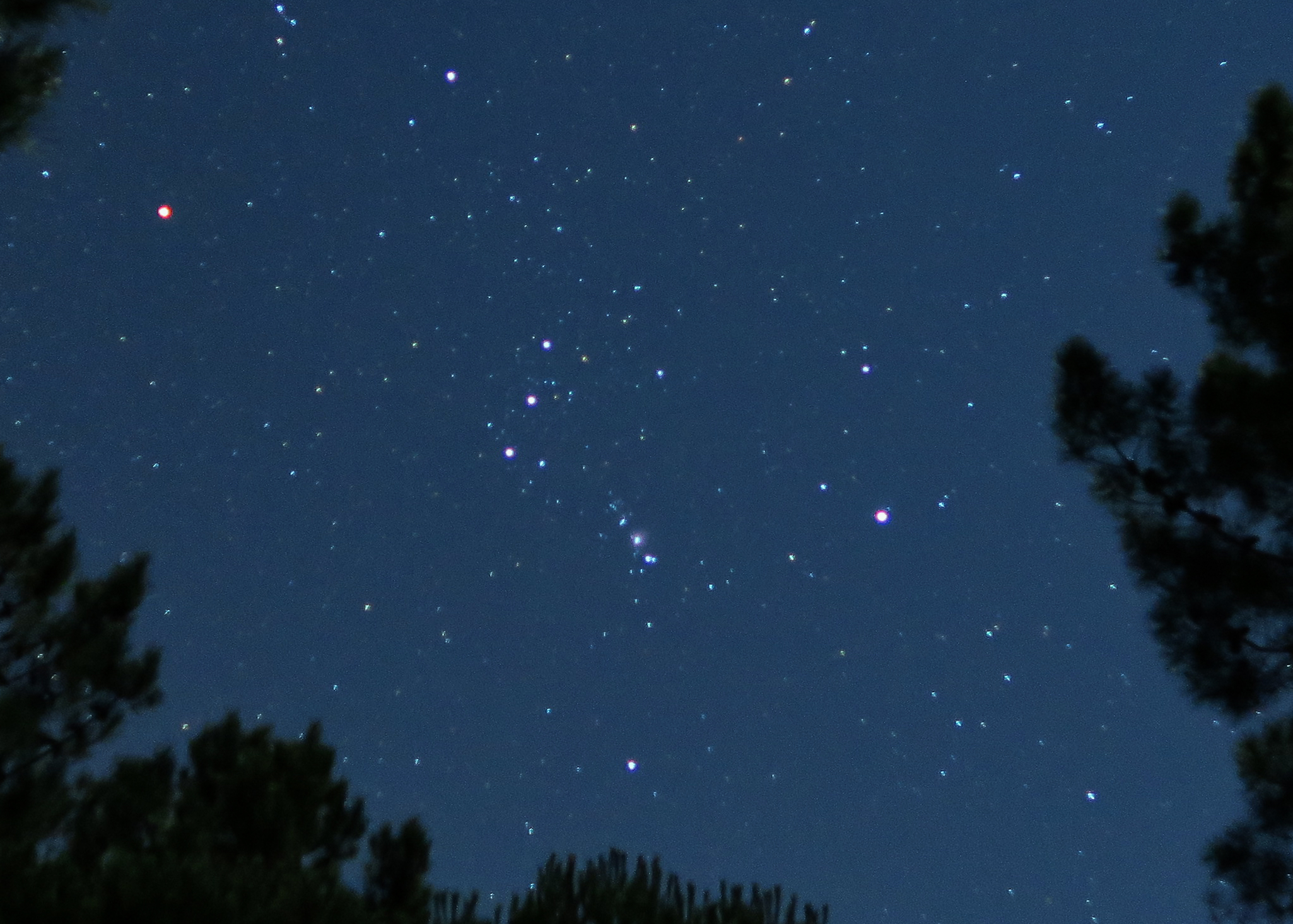See the Moon, Jupiter and the Pleiades on Christmas Eve and Christmas Night. Once you’ve found them, explore with binoculars and a telescope.
Are you wondering what that bright star is near to the Moon? Chances are it’s the planet Jupiter!
Jupiter is currently looking amazing in the night sky, having reached opposition in November 2023.
On Christmas Eve and Christmas night, the Moon will be joined by the planet Jupiter, making for a wonderfully festive stargazing sight.
Between the Moon and Jupiter will be the Pleiades, a wonderful open star cluster that can be seen with the naked eye and which glows a bright blue hue when explored with even a modest pair of binoculars.
On Christmas Eve you’ll be able to see Jupiter and the Moon rising in the east as the sky grows darker, from around 17:00 UTC onwards.
Jupiter will be positioned above and to the right of the Moon, and in between the two bodies will be the Pleiades open star cluster.
Jupiter will appear as a bright star to the naked eye, but will look even better through binoculars.
Observe Jupiter through a telescope and you’ll be able to see its stripes and large Galilean moons.
As the sky continues to grow dark, at around 20:30 UTC you’ll see the constellation Orion has joined the Moon and Jupiter in the sky, making for a great naked-eye view.

The view will be similar on Christmas Night, 25 December, as Orion once again joins the Moon, the Pleiades and Jupiter in the night sky.
Step out on Christmas Night at around 20:00 UTC and you’ll see the Moon, the Pleiades and Jupiter together in a line, an impressive sight if the sky is clear and dark.
The three can be seen with the naked eye, but if you have a telescope or a pair of binoculars, you’ll be able to explore each of these bodies a little closer.

Orion is a great constellation to explore. If you have dark skies, you should be able to see the Orion Nebula with the naked eye, while binoculars or a telescope will give you great views of this star-forming region.
Explore Orion’s Belt, too, and be sure to pinpoint the bright red star Betelgeuse, which forms the hunter’s left shoulder.

The Pleiades is a wonderful open star cluster that glows bright blue and can easily be seen with the naked eye.
Again, a pair of binoculars or a telescope will get you closer, and you’ll be able to see even more stars within the cluster.
Read our guide on how to photograph the Pleiades for an extra challenge!

And when it comes to Jupiter, even a modest refractor telescope will reveal the planet’s stripy appearance and its large Galilean moons, making this a great target if you’ve received your first telescope for Christmas.
For more advice, read our guide on what to see in the sky on Christmas night.